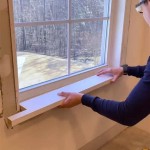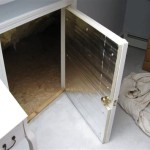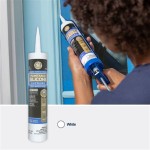How Much Does Interior Wall Paint Cost?
Determining the cost of painting interior walls involves a multifaceted approach, considering both the material costs associated with paint and the potential labor expenses if professional painting services are employed. The overall cost can vary significantly depending on several factors, including the type of paint selected, the size of the area being painted, the condition of the walls, and geographic location.
Understanding the intricacies of these cost drivers allows for a more accurate estimation of the project's financial implications. This knowledge empowers homeowners and property managers to budget effectively, compare quotes from different contractors, and make informed decisions that align with their aesthetic preferences and financial constraints.
The following sections will dissect the key components that contribute to the overall cost of painting interior walls, offering a detailed examination of each factor. This comprehensive analysis aims to provide a clear understanding of the typical price ranges, enabling individuals to approach their painting projects with confidence and financial preparedness.
Paint Type and Quality: A Primary Cost Driver
The type and quality of paint selected significantly influence the overall cost of an interior wall painting project. Paints are categorized based on their composition, finish, and specific properties, each impacting the price per gallon and the required number of coats for optimal coverage.
Latex paints are generally the most common and affordable option for interior walls. They are water-based, making them easy to clean with soap and water. Latex paints are also known for their low odor and quick drying time, making them a preferred choice for residential applications. Within the latex category, the quality can vary significantly. Budget-friendly latex paints may require multiple coats to achieve adequate coverage, potentially offsetting the initial cost savings. Higher-quality latex paints, on the other hand, often offer superior coverage, durability, and resistance to scuffs and stains, potentially justifying the higher price point.
Acrylic paints are another type of water-based paint known for their excellent adhesion and durability. They are often used in areas prone to moisture, such as bathrooms and kitchens. Acrylic paints are more flexible than latex paints, making them less prone to cracking and peeling, particularly in areas with temperature fluctuations. This enhanced durability often comes with a higher price tag compared to standard latex paints.
Oil-based paints, while less common for interior walls due to their strong odor and longer drying time, offer exceptional durability and a smooth, glossy finish. They are often used for trim and doors, where a hard, durable surface is desired. Oil-based paints require specialized solvents for cleaning, adding to the overall cost. Furthermore, environmental regulations in some areas may restrict the use of oil-based paints, making them less accessible.
Specialty paints, such as those with antimicrobial properties or low volatile organic compounds (VOCs), can also impact the overall cost. Antimicrobial paints are often used in hospitals and healthcare facilities to inhibit the growth of bacteria and mold. Low-VOC paints are environmentally friendly and emit fewer harmful chemicals into the air, making them a healthier option for individuals with allergies or sensitivities. These specialty paints typically command a premium price due to their specialized formulations and benefits.
The finish of the paint, such as matte, eggshell, satin, semi-gloss, and gloss, also influences the price. Matte finishes are often the most affordable and are best suited for low-traffic areas where hiding imperfections is a priority. Gloss finishes are the most durable and easiest to clean but can highlight imperfections on the wall surface. Each finish offers a unique aesthetic and functional advantage.
In summary, selecting the appropriate paint type and quality directly impacts the overall cost. Factors to consider include the desired durability, finish, environmental impact, and the specific needs of the room being painted. Researching different paint brands and comparing prices is essential to making an informed decision that balances cost and performance.
Room Size, Preparation, and Labor: The Scope of the Project
The size of the room to be painted is a critical determinant of the overall cost. Larger rooms require more paint, naturally increasing the material expenses. However, the impact extends beyond the sheer volume of paint needed. Larger rooms also translate to more surface area to prepare and paint, potentially increasing the labor costs if professional painters are hired.
The amount of preparation required before painting also significantly impacts the cost. This includes tasks such as cleaning the walls, patching holes and cracks, sanding rough surfaces, and applying primer. Walls that are in poor condition require more extensive preparation, leading to higher labor costs and potentially the need for additional materials, such as spackle or drywall compound. The existing condition of the walls is a crucial factor in accurately estimating the total cost of the project.
The cost of labor is a significant component, especially when hiring professional painters. Labor rates vary depending on geographic location, the experience of the painters, and the complexity of the job. Some painters charge by the hour, while others charge a flat fee per room or square foot. Obtaining multiple quotes from different painters is essential to ensure a competitive price and a clear understanding of what is included in the service.
The complexity of the room's layout also influences labor costs. Rooms with intricate trim, numerous windows and doors, or high ceilings require more time and skill to paint. These features necessitate careful masking and cutting-in, increasing the labor time and potentially the overall cost. Similarly, rooms with difficult access or requiring specialized equipment, such as ladders or scaffolding, may also incur additional labor charges.
Furthermore, the number of coats of paint required affects both material and labor costs. While a single coat may suffice for touch-ups or repainting with a similar color, most painting projects require at least two coats to achieve proper coverage and durability. Darker colors or significant color changes may necessitate even more coats, further increasing the overall cost.
DIY painting can significantly reduce labor costs but requires time, effort, and the necessary skills. Homeowners should realistically assess their abilities and experience before undertaking a painting project. Improper preparation or application can result in a subpar finish and potentially necessitate hiring a professional to correct the mistakes, ultimately increasing the overall cost.
Ultimately, the size of the room, the amount of preparation required, the complexity of the layout, and the decision to hire professionals or tackle the project DIY are all crucial considerations that significantly influence the overall cost of painting interior walls.
Geographic Location and Market Factors: Regional Price Variations
The cost of interior wall paint and painting services can fluctuate considerably based on geographic location. Areas with a higher cost of living typically experience higher labor rates and material costs. Urban centers, for example, often have higher prices compared to rural areas due to increased operating expenses and demand for services.
Local market conditions also play a significant role. Areas with a high demand for painting services due to new construction or renovation projects may experience increased prices. Conversely, areas with a surplus of painters may offer more competitive rates. Economic factors, such as inflation and unemployment rates, can also influence the overall cost of painting services.
The availability of paint suppliers and the competition among them can also impact material costs. Areas with multiple paint stores and suppliers may offer more competitive pricing, while areas with limited options may have higher prices. Online retailers can provide alternative options and potentially lower prices, but shipping costs must be considered.
Seasonal variations in demand can also influence pricing. Painting services are often in higher demand during the spring and summer months, leading to increased prices due to increased demand and favorable weather conditions. Off-season painting projects, such as during the fall or winter, may offer lower prices due to reduced demand.
Furthermore, local regulations and building codes can impact the cost of painting. Some areas may require specific types of paint or adherence to certain environmental standards, potentially increasing the material costs. Compliance with safety regulations, such as lead paint abatement, can also add to the overall expense.
The presence of unionized painters can also influence labor rates. Union painters typically command higher wages and benefits compared to non-union painters, potentially increasing the labor costs. However, union painters may also offer higher levels of skill and experience, potentially resulting in a higher quality finish.
Therefore, researching local market conditions, comparing prices from different suppliers and contractors, and considering seasonal variations are essential to obtaining the most competitive pricing for interior wall painting projects. Understanding the nuances of the local market allows for a more accurate budgeting and cost estimation process.
In conclusion, the cost of painting interior walls is a complex equation influenced by a multitude of factors. A comprehensive understanding of these different components allows for a more informed and financially responsible approach to interior painting projects. Careful planning, thorough research, and realistic budgeting are key to achieving the desired aesthetic within budget.

How Much Does It Cost To Paint A Room

How Much Does It Cost To Paint The Interior Of A House In Paintrite Pros

How Much Does Interior House Painting Cost A New Leaf

How Much Does It Cost To Paint The Interior Of A House In Paintrite Pros
The Cost To Paint Interior Of A House Touch Color

Cost Of Painting A House Interior Comprehensive Guide

Interior House Painting Costs In Roseville Trico

How Much Does It Cost To Paint A House Interior

How Much Does Interior Painting Cost Castle Complements

Interior Painting Melbourne Cost Breakdown
Related Posts








